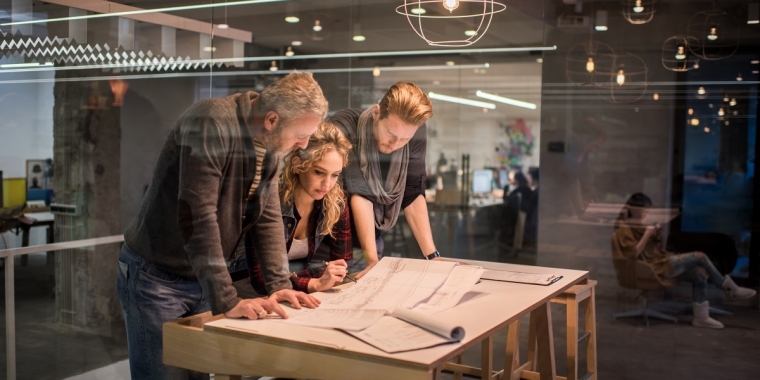Tue 27th Apr 2021
Is there hidden value in your designs?
Services: Board support and consultancy, Brand protection, IP portfolio management, IP strategy, Start up or scale up
Sectors: Fashion, Mechanical engineering
Is there hidden value in your designs? On International Design Day, David Roberts outlines the key benefits of registering your designs in the UK and abroad.

Browsing the internet for a bottle opener, it is easy to sort items in order of price. There is one for £15, a collection of designer versions for £60, up to £360 for a bottle opener by a well-known Italian fashion designer.
Most of these bottle openers operate in the same way. So why the big discrepancy in price? How can one cost six times as much as another or even 24 times as much as something which does the same thing?
Of course, part of the answer (on International Design Day) is that much of the value is in the design of the item. Human beings are drawn to good design, and consumers with disposable income are happy to pay more for unique designs and luxury goods, even if they can find an equivalent that is much cheaper.
While this premium value translates to profit and is good news for designers, product developers and manufacturers, it is also a magnet for counterfeiters. Protecting designs of products is therefore of great importance for many products.
Protection of designs can also be just as important for user interfaces in software applications. Usability of an interface makes all the difference in the online customer experience, and a website or app which is a joy to use will be one that customers return to again and again.
“If you have designed something where at least part of its value lies in its aesthetic appeal, it may be worth protecting with a registered design,” says David Roberts, a partner at Page White Farrer who has advised on the registration of hundreds of designs. “Taking a proactive approach to managing your intellectual property enables you to remain in control and gives you the power to prevent others copying or using your designs. Registering a design is a valuable and inexpensive, but often overlooked, form of IP protection.”
Passive or active design protection
When it comes to protecting designs, a business has a choice of being passive or active in its approach.
Do nothing, do not register your design
Just as the creator of a piece of writing or music or a photograph benefits from copyright automatically, in some cases a designer also has some automatic rights (known as unregistered design rights), though this is not always the case.
Register your design
You can take the step of registering your design(s)
Benefits of registering a design
Registering a design puts you in a much stronger position for the following reasons:
- Protection lasts for up to 25 years, which, compared to the 3 or 10/15 years maximum for some unregistered design rights, means you can keep competitors at bay for longer.
- If someone subsequently produces or sells the same or a very similar design in a territory where your design is registered you can take steps to prevent them, without having to prove copying.
- You can use your registration certificate to request that copycat products be removed from sale on online marketplaces promptly.
- Registration of a design is taken as evidence that you are the actual owner of the design rights.
- Wherever you are in the business lifecycle, at some stage you may want to exit. An intellectual property portfolio is a key consideration to any buyer or investor, and those companies that have a well-managed and well-protected inventory of IP assets are viewed as having a source of future income streams.
“Importantly, registration provides you with a market monopoly for your design in the territories where it is protected” explains David. “You can stop the copycats much more easily with a registered design. It can be an important tool to use against counterfeiters and others wishing to benefit from your labour. Moreover, you can mark your goods or packaging with the details of your registered design. This can act as a deterrent to potential infringers, meaning that you may never even need to positively assert your rights.”
Fast fashion v fast protection
While some designers aim to produce an enduring classic, other designers operate in fast-moving sectors where designs change every year or every season and believe that it is enough to rely on unregistered rights, arguing that the timeframe is too short to seek registration.
However, a design can be registered in a very short space of time, usually within a couple of weeks. And who knows whether this season’s fast-fashion item might become one of the enduring classics?
Implications of Brexit
Since Brexit, a designer will need to register their designs separately in the UK and the EU, if protection is desired in both territories. Page White Farrer has offices in London, Leeds and Munich and can handle both UK and EU filings. We also have strong links with overseas firms, should you want to extend protection outside of Europe. It is worth mentioning that the UK and the EU have attractive fee structures if there are multiple designs to be filed at the same time.
How we can help
With our extensive experience, we can ensure that your application is in a format that will maximise your scope of protection, and avoids pitfalls which are easy to fall into but which can be difficult to get out of.
We can also help you if you are interested in finding registered designs that already exist in your sector, and can advise you on how to avoid infringement of existing registered designs that are owned by third parties.
Page White Farrer has offices in Munich, London and Leeds and a team of European, German, Finnish, French and UK qualified patent, trade mark and design attorneys.
We provide a comprehensive, one stop shop for all European intellectual property. In particular, we can handle the registration of the same design in the UK IPO and EU IPO at the same time, using the same experienced team of personnel.
Please contact David Roberts (London) or your usual contact if you have any questions about designs and intellectual property rights.
This briefing is for general information purposes only and should not be used as a substitute for legal advice relating to your particular circumstances. We can discuss specific issues and facts on an individual basis. Please note that the law may have changed since this article was first published in April 2021.


